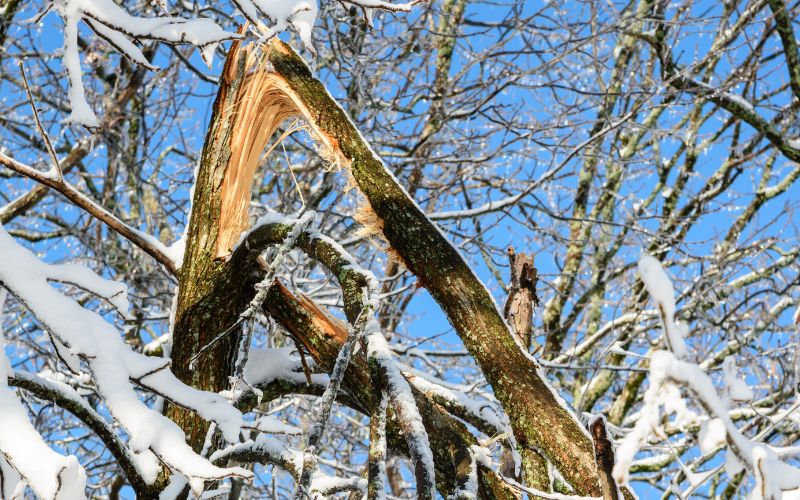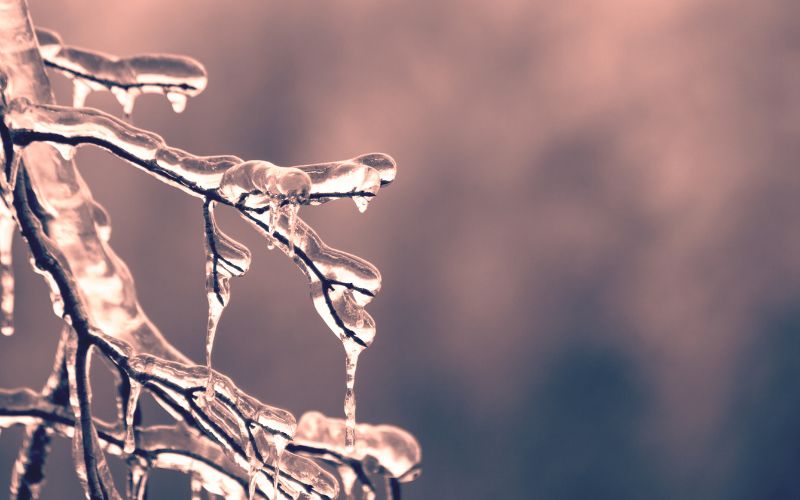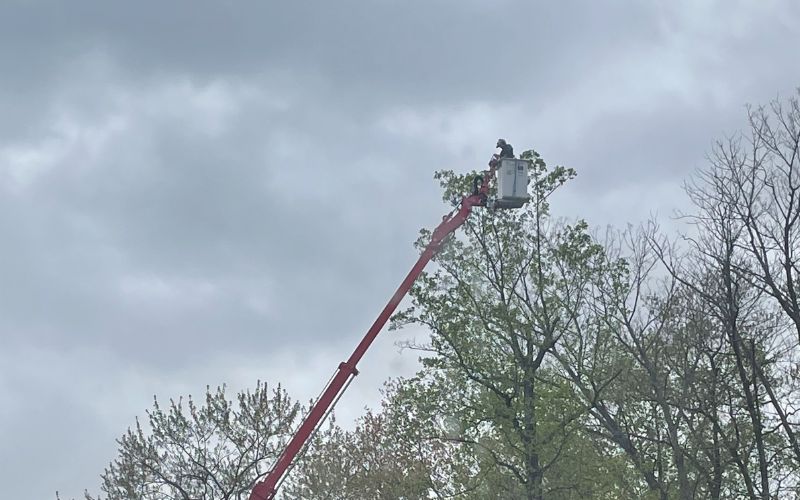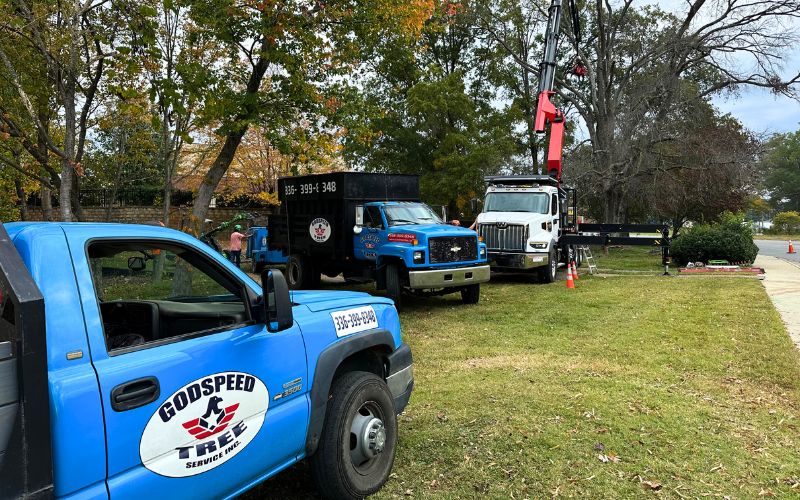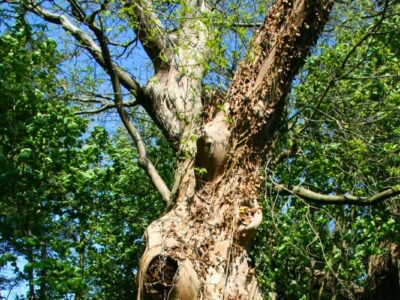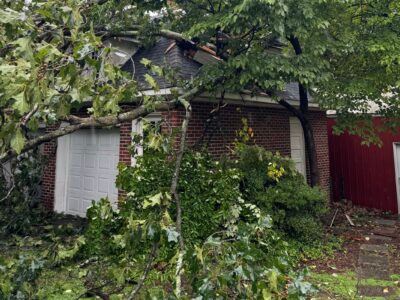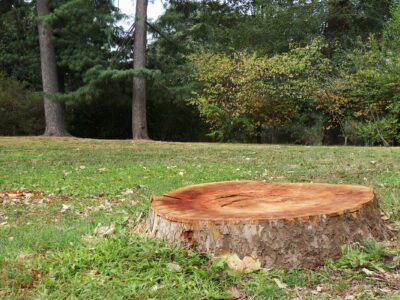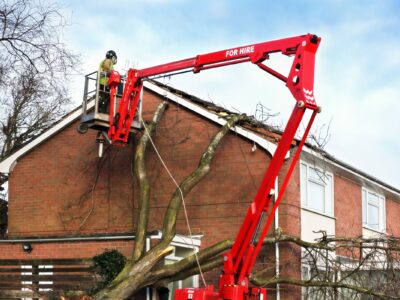Bracing for Winter: How Freezing Temperatures Affect Trees in Winston-Salem
December 19, 2023
Discover how Winston-Salem's trees stand against winter's deep freeze. From frost cracks to winter burn, learn expert tips from Godspeed Tree Service on protecting your green giants from the cold. Read on for arborist insights and recovery strategies!
If you’re wondering how freezing weather affects trees in Winston-Salem, you might be surprised to hear that not all trees deal with frigid temperatures, ice, and snow in exactly the same way. Some plants are far more sensitive than others, struggling to stay alive when the temperatures dip into the 40s, while others can handle sub-zero weather with ease.
Here in Winston-Salem, we’re fortunate to enjoy comparatively warmer weather. Even when Old Man Winter does come around, it’s rare that we have temperatures much below freezing.
However, as the deep freeze of January 21, 1985, showed us, cold weather can happen (temperatures fell to -8F!). So, it’s important that you take steps ahead of time to make sure your trees are protected from the elements. In this article, we cover:
- what happens to trees when temperatures drop,
- the signs of freeze damage to look for,
- which trees are likely to suffer freeze damage, which probably won’t, and why that is,
- how to protect your trees before cold weather arrives, and
- what you can do to help frozen trees recover.
How Does Cold Weather Affect Trees?
Ice and freezing temperatures can impact trees in a variety of ways. Again, it’s important to note that not all trees are susceptible to cold injury. However, some of the following issues may arise.
Cracking
When the temperatures are above freezing during the day and drop below freezing at night, this sudden fluctuation in temperatures can cause the bark to crack and fall off the tree. The portions of the tree that face south and west tend to suffer the most damage because they get the most direct sunlight.
Frost cracks or stress cracks can also occur within the bark and are also caused by a sharp drop in temperature. Younger trees with thinner bark are the most susceptible. Once a frost crack appears once, it is likely to come back every year.
Broken Limbs
Limb breakage is common, too. This usually occurs when snow and ice accumulate, causing weight to build up on a branch until it can’t handle the burden any longer. It was only a few years ago that the Triad experienced a massive snowfall (14.5” inches in Winston-Salem!), closing schools, causing power outages, and bringing down branches and even entire trees.
Winter Burn
Finally, your trees may suffer from winter burn or desiccation. This is most common on evergreens, which still have foliage during the winter months.
When there’s less water available to the tree during the winter (winter is a notoriously dry time of the year), the tree uses up the moisture from its own cells. This can cause the foliage to become brown, red, or damaged-looking.
Leaf discoloration can occur on other types of trees, too. This occurs when ice crystals form inside the leaf cells and cause the cell walls to rupture.
It’s important to note that freezing temperatures are often coupled with wind, which can make winter burn worse and inflict a number of other injuries on your tree.

Which Trees Handle Cold Weather the Best?
Native trees tend to perform best when it comes to freezing weather. Many species shut down and drop their needles or leaves that aren’t functioning once they’ve frozen. Once the weather warms up, they leaf right back out again.
Generally speaking, trees that shed their leaves after a deep freeze are more likely to recover than those that retain dead, cold-damaged leaves. When trees shed their leaves, it indicates that there is still some living stem tissue.
Which Trees Cannot Handle Freezing Temperatures?
Tropical plants, of course, are going to be much more affected than evergreen shrubs and small ornamental trees. The former will need some form of protection whenever possible.
Other plants that aren’t hardy in the face of a freeze include most palms (with the exception of sago palms, which can usually recover) and those that haven’t yet set deep roots.
Pine species like slash pine and longleaf pine have less resistance to freezing temperatures, while species like shortleaf pine and loblolly pine perform quite well.
How Tree Health Influences Susceptibility to Cold
Trees that are weak, diseased, or infested with insect pests will be more vulnerable to cold temperatures.
Ultimately, the healthier your tree is, the more likely it is to make it through cold weather unscathed. Well-adapted, healthy trees will usually recover from a freeze, especially if they don’t suffer any structural damage.
Microclimates & Planting Location
You might be surprised to find that, after a deep freeze, two trees of the same species didn’t fare the same. That’s because they might be planted in different microclimates. Microclimates are small pockets where local atmospheric conditions vary from those in the surrounding area.
For example, you might have small “frost pockets” on your lawn where temperatures get quite a bit lower than the rest of your landscape. Low-lying areas are more likely to suffer colder temperatures than higher areas nearby, and plants that are located on the north or northwest side of a building will likely see the coldest temperatures, too.
Trees with fully exposed crowns or trees that are taller than surrounding ones are also more likely to suffer damage.
How to Protect Your Trees from Cold Weather
Here are some tips to help keep your trees safe – and growing well – when cold weather arrives.
Plant the Right Tree in the Right Place
When selecting trees to plant in your yard, make sure you’ve selected those that are within the right hardiness zone. Here in Winston-Salem, you should aim to plant trees that are hardy in Zones 7b to 8a.
Trees and shrubs rated only for zones 8b and higher are unlikely to handle the colder weather.
Fertilize Regularly
Fertilization can help plants handle cold temperatures, but it’s important that you use the right type of fertilizer and get the timing right.
- Before a freeze, fertilization should be part of your annual tree care checklist. Regular treatments, like deep root fertilization, can keep your trees strong and healthy to give them the best chance of withstanding – and recovering from – a deep freeze.
- After a freeze, fertilization can help trees recover from cold damage. However, post-freeze nutrition should wait until the first signs of leaf emergence in spring. Otherwise, it can provide too much stress to the tree’s system when it’s trying to bounce back from the freeze since it can’t metabolize and use fertilizers as efficiently as it normally would.
Prune Properly
Because one of the most common types of injury to trees during cold weather has to do with limb breakage, pruning can be helpful.
Pruning will remove any branches or limbs that are weak, dead, or diseased, reducing the likelihood that they will snap under the pressure of snow or ice.
However, it’s important to get the timing and type of pruning right. While preventive pruning is always smart, you don’t want to wait until the last minute and prune right before a winter storm or deep freeze. This can stress the tree and make it difficult for it to bounce back when it freezes.
If your tree suffers a freeze, you can prune afterward, but you should get the opinion of a Certified Arborist first. It’s best to wait until the tree has put out new growth before you do any pruning, because, again, this can cause unnecessary stress at the worst possible time.
Be patient and only prune if it’s recommended. Allow the trees to leaf out in the spring – then, if you still see dead areas, you can prune them off.
Water Thoroughly
For the most part, it’s better to have a wet freeze than a dry freeze. When the ground around your tree is moist, the roots will be better insulated and can withstand the cold weather a bit better. Plus, moist soil raises the ambient temperature by a degree or two – sometimes that’s enough to prevent freezing.
Therefore, it’s a good idea to water before the temperatures drop. Give them a good soaking the day before the forecasted freeze to reduce the potential for cold injury.
Watering can not only prevent injury from cold temperatures and ice but can also reduce the likelihood of winter burn.
Know What to Do After a Freeze
Protecting your trees from cold weather isn’t always possible. You might not be aware of the impending freeze – and even if you are, it can be challenging to protect a large tree from the cold.
While you can cover up a smaller tropical plant with a frost blanket or row cover (or even an old sheet), it’s pretty much impossible to cover an entire tree. And unless you are growing a tiny ornamental tree in a container, it’s not going to be realistic to bring your tree inside to stay warm, either!
If the worst happens and your tree or shrub looks as though it died after a hard freeze, realize that it might not actually be dead. Many trees can suffer complete foliar dieback and still be able to produce new growth once the weather warms. Don’t give up on a tree just because it looks dead.
A tree health assessment, preferably by Certified Arborists like those at Godspeed Tree Service, can determine if the freeze injury is fatal or if the tree may recover. These assessments are invaluable in identifying pre-freeze weaknesses and post-freeze recuperation strategies.
Invest in Regular Tree Health Assessments
A tree health assessment is something that should be done regularly for all of your trees – ideally, once a year. You can have an assessment done both before and after a hard freeze if desired. That way, you’ll know what you need to do to help your tree prepare, as well as what you can do afterward to help it recover.
Trees often suffer more damage than you’d like, even if you take the right precautionary measures. While a tree health assessment can’t save all trees, it can help head off potential problems in many cases.
When you have a tree health assessment done, a Certified Arborist will painstakingly inspect the tree, looking for any signs of weakness. These professionals rely on several different techniques to determine a tree’s health, structural stability, and overall soundness. They’ll let you know if there’s anything you can do to help your tree withstand cold weather pressure or if it needs to be removed ahead of time.
Winter is Coming – Call Godspeed Tree Today
In Winston-Salem, extreme cold snaps, though rare, can strike hard and fast. The best defense for our trees is ensuring robust health before winter’s arrival. At Godspeed Tree Service, we stand ready to assess and prepare your trees for the cold. And should a freeze catch you unprepared, we’re here to help in your tree’s survival and recovery.
For a comprehensive tree health assessment or immediate post-freeze assistance, call Godspeed Tree Service at 336-399-8348. Our Certified Arborists are your tree’s best ally against Winston-Salem’s winter chill.

Godspeed Tree Service
Owned and operated with high standards and consistent reliability by Bobby Gates, Godspeed Tree Service has earned the trust of the North Carolina Triad community over the course of more than 25 years in business. With a strong emphasis on safety, conscientious training, and accommodating the needs of each client, you can't go wrong by hiring Godspeed for any of your tree service needs!
